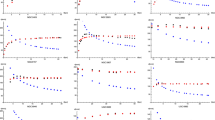Abstract
The basic concepts of an alternative theory of Non-Inflationary Cosmology established by the author, in this paper are applied as astrophysical mechanisms for creation of a theoretical model in favor of a unique galaxy with reverse rotating two discs. Based mainly on the phenomenon of the galactic local explosion/implosion phenomenon with its direct applications, this primary model is more extended, aiming at the consideration of the possibility of a binary system of supermassive black holes in the core of such galaxy. This prediction is necessary for enlightening the unusual behavior of this galaxy, moreover, for the disclosure of gravitational radiation of this theoretical model, initiating creation of a unique program for the prospective observations/detection of similar galaxies. Revealed by the theory of Non-Inflationary Cosmology original state of matter in the state of Bose condensate inside a galactic supermassive black hole is able to reveal macroscopic quantum gravity phenomena.
Similar content being viewed by others
References
V. Impellizzeri et al., “Counter-rotation and high-velocity outflow in the parsec-scale molecular torus of NGC 1068,” Astroph. J. Lett. 884, L28 (2019).
A. Avetissian, “Cosmological bang within matter era. Is the generation of galactic-scale mass possible?” arXiv: 0711.2969.
A. Avetissian, “Cosmological bang as a consequence of a sudden change in the quantum statistics of nuclear matter,” Astrophysics 51 (1), 130–139 (2008).
A. Avetissian, “Planck’s constant variation as a cosmological evolution test for the early Universe,” Grav. Cosmol. 15, 10–12 (2009).
A. Avetissian, “Might quantum symmetry breakdown cause super-massive proto-matter according to Ambartsumyan’s prediction?,” in: Evolution of Cosmic Objects Through their Physical Activity. V. Ambartsumian’s 100 \({}^{\textrm{th}}\) ann. conf. (Edit Print, Yerevan, 2010), p. 268–274.
A. Avetissian, “Several aspects of the problems of cosmomicrophysics,” in: GAMOW-10 \({}^{\textrm{th}}\) Int. Conf. Astronomy and Beyond: Astrophysics, Cosmology and Gravitation, Cosmomicrophysics, Radio-Astronomy and Astrobiology (OSU Press, Odessa, 2010), p. 86–91.
A. Avetissian, “New cosmic scales as a cornerstone for the evolutionary processes, energetic resources and activity phenomena of the non-stable Universe,” ASP Conference Series 511, 230–237 (2017).
A. Avetissian, “On the fundamental cosmological scales in matter era,” Grav. Cosmol. 24, 375–377 (2018).
A. Avetissian, “Footprints of non-inflationary cosmology in programs OLIMPIA and synthesis of heavy elements,” J. Phys. Conf. Ser. 1390, 012084 (2019).
A. Avetissian, “New astrophysical mechanism of disc-shaped galaxies’ rotation by the theory of non-inflationary cosmology,” Reports of NAS RA 119, 142–150 (2019).
A. Avetissian, “Entangled gravitons? Prospective original scenarios in cosmology,” Grav. Cosmol. 26, 22–28 (2020).
G.R. Meurer et al., “Cosmic clocks: a tight radius–velocity relationship for HI-selected galaxies,” Mon. Not. R. Astron. Soc. 476, 1624–1636 (2018).
A. Avetissian, “Interaction of charged particles with the field of rotating magnetic dipole in the presence of electromagnetic radiation,” Astrophysics 16, 170–181 (1980).
A. Avetissian, “Magnetosphere of baryon stars. II. Inclined rotator,” Astrophysics 15, 80–92 (1979).
J. Kormendy and D. Richstone, “Inward bound—the search for supermassive black holes in galactic nuclei,” Ann. Rev. Astron. Astrophys. 33, 581–624 (1995).
J. Magorrian et al., “The demography of massive dark objects in galaxy centers,” Astrophys. J. 115 (6), 2285–2305 (1998).
J. Kormendy and R. Bender, “Correlations between supermassive black holes, velocity dispersions, and mass deficits in elliptical galaxies with cores,” Astrophys. J. 691 (2), L142–146 (2009).
J. Hong J et al., “Binary black hole mergers from globular clusters: the impact of globular cluster properties,” Mon. Not. R. Astr. Soc. 480, 5645–5656 (2018).
N. Stone and N. Leigh, “A statistical solution to the chaotic, non-hierarchical three-body problem,” Nature 576 (7787), 406–410 (2019).
N. Arav et al., “HST/COS observations of quasar outflows in the 500–1050 E rest frame,” Astrophys. J. Supl. Ser. 247 (2), 37 (2020).
B. Gerke et al., “The DEEP2 Galaxy Redshift Survey: AEGIS observations of a dual AGN at \(z=0.7\),” Astrophys. J. 660, L23–L26 (2007).
F. Liu et al., “A milli-parsec supermassive black hole binary candidate in the galaxy SDSS J120136.02+300305.5,” Astrophys. J. 786 (2), 103–116 (2014).
K. Bansal et al., “Constraining the orbit of the supermassive black hole binary 0402+379,” Astrophys. J. 843(1), 14–22 (2017).
P. Kharb et al., “A candidate sub-parsec binary black hole in the Seyfert galaxy NGC 7674,” Nature Astron. 1 (10), 727–733 (2017).
B. P. Abbott et al., “Observation of gravitational waves from a binary black hole merger,” Phys. Rev. Lett. 116, 061102 (2016).
B. P. Abbott et al., “The basics of physics of the binary BH merger GW 150914,” Ann. Phys. 529 (1-2), 1600209 (2017).
L. Blanchet et al., “Gravitational-radiation damping of compact binary systems to second post-Newtonian order,” Phys. Rev. Lett. 74, 3515 (1995).
P. Van Dokkum et al., “A galaxy lacking dark matter,” Nature 555, 629 (2018).
S. Danieli et al., “Still missing dark matter: KCWI high-resolution stellar kinematics of NGC1052-DF2,” arXiv: 1901.03711.
N. Matt et al., “An extremely energetic supernova from a very massive star in a dense medium,” Nature Astron. 4, 893–899 (2020).
Y. Zhao et al., “Frequency-dependent squeezed vacuum source for broadband quantum noise reduction in advanced gravitational-wave detectors,” Phys. Rev. Lett. 124, 171101 (2020).
L. McCuller et al., “Frequency-dependent squeezing for advanced LIGO,” Phys. Rev. Lett. 124, 171102 (2020).
T. Yuan et al., “A giant galaxy in the young Universe with a massive ring,” Nature Astr. 4, 957–964 (2020).
Author information
Authors and Affiliations
Corresponding author
Rights and permissions
About this article
Cite this article
Avetissian, A.K. Non-Inflationary Cosmology Scenario of a Unique Galaxy with Reverse Rotating Two Discs. Gravit. Cosmol. 27, 226–239 (2021). https://doi.org/10.1134/S020228932103004X
Received:
Revised:
Accepted:
Published:
Issue Date:
DOI: https://doi.org/10.1134/S020228932103004X




